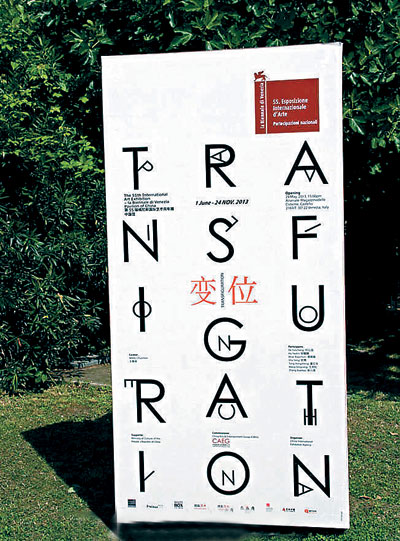|
“Many Chinese artists hope to improve their international reputation by paying their way to international events. But low-level works can’t improve perceptions of Chinese art in international art circles.”
— Mu Duosheng

MORE than 2,000 Chinese artists flocked to this year’s Venice Biennale and accounted for more than half of the total participants in the grand art event, in a mass gathering that was criticized as excessive commercialism, local Chinese-language media reported last week.
Many Chinese art critics said the flood of Chinese artists and curators to the annual event, which opened May 29, was driven by business purposes, rather than art.
“If there is no real breakthrough in artistic creation, just upgrading the exhibitions to take them overseas will not help. This is still a low level of business efforts, rather than true artistic progress,” said Zhu Qi, a Chinese art critic.
Art critic Mu Duosheng echoed Zhu’s opinion.
“Many Chinese artists hope to improve their international reputation by paying their way to international events like the Venice Biennale. This is good business and may help them make big money on the art market. But in reality, it has nothing to do with the artworks and these low-level works can’t improve perceptions of Chinese art in international art circles,” Mu said.
There were three types of exhibitions at the Venice Biennale. The main exhibition was planned by the chief curator, who was appointed by the event’s organizing committee. Works for the main exhibition were chosen through a strict selection process.
Parallel exhibitions were displayed at the invitation of the organizing committee, side-by-side with the main exhibition. They paid their own expenses but were authorized to use the Biennale logo and intellectual property rights. Although parallel exhibitions were not organized or promoted by the organizing committee, they were official parts of the event.
Lastly, independent peripheral exhibitions were held during the Venice Biennale, not formally attached to the event but hoping to capitalize on its audience.
About 10 parallel exhibitions organized by Chinese curators introduced contemporary Chinese art to international audiences at the Biennale.
“There were so many parallel exhibitions, and each probably cost millions of yuan. It might be better to just give the money to the artists rather than waste it on such a big fair,” said well-known curator Dai Zhuoqun.
Among the parallel exhibitions held by Chinese curators and artists, Wang Lin’s “Voice of the Unseen” has drawn the most criticism.
The exhibition opened two weeks ago and became the largest overseas exhibition for Chinese artists, with more than 150 Chinese works. Four of the artists — Ying Tianqi, Liu Zijian, Liang Quan and Dai Yun — were from Shenzhen.
Wang said he was simply trying to expand the artists’ audiences.
“In overseas art circles, contemporary Chinese art means a few people, a few works and a few symbols. I named the exhibition ‘Voice of the Unseen’ because I wanted to help overseas art circles learn more about Chinese artists and works,” Wang said. “At a parallel exhibition during the 2011 Venice Biennale, a work by Ying was chosen by a Dutch art foundation and sent to exhibit at the 2012 Venice Biennale for Architecture. That’s not enough. Parallel exhibitions are open to all independent curators in the world. For the Chinese mainland, the Venice Biennale provides an international stage to display Chinese art.”
Some said it was unnecessary to exaggerate the Biennale’s influence.
“No matter if it’s national pavilions or parallel exhibitions, they are all cultural activities in Venice, so it does not matter whether the artists go or not,” Chen Xiangbo, president of the Guan Shanyue Art Museum, said.
Another artist, curator and critic, Xu Zilin, said the most important thing was what kind of works an artist could bring to Venice.
“Chinese artists should think more about what to bring to Venice than whether to go to Venice. Chinese artists should focus more on art research and works,” he wrote on his microblog.
The Venice Biennale will run until Nov. 24. (Wang Yuanyuan)
|

